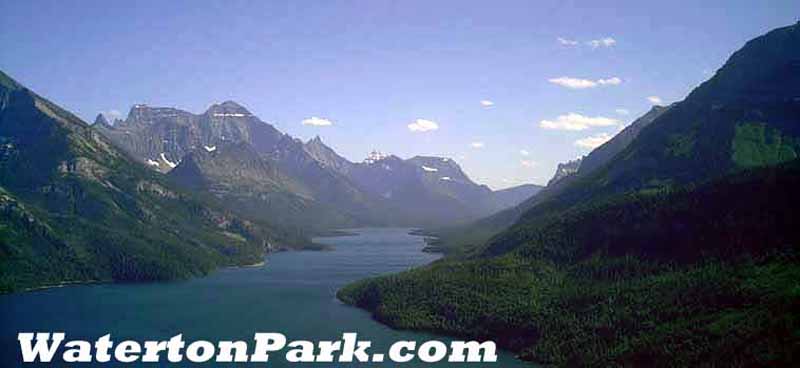![]()
![]()
| Home | Site Map | FAQ | Links |
|
|
|

| MAPS | ACTIVITIES | LODGING | DINING |
| TRAVEL INFO | REFERENCE | GALLERY | EMPLOYMENT |
Unique Vegetation
Waterton Lakes has over 1,400 forms of vegetation. In addition, amongst Waterton's more than 970 species of vascular plants, 179 species are rare in Alberta. Twenty-two of these plants are not found anywhere else in Alberta. Two of Waterton Park's more unique plant-life are detailed below: MoonwortWaterton Lakes National Park has globally significant genetic diversity, best symbolized by its amazing variety of small ferns called moonworts. Waterton Park has 8 different moonworts. The Waterton moonwort (Botrychium x watertonese) is only found here and is considered the rarest plant in the park. BeargrassTall beargrass flowers (see above photo) and their tufts of grassy leaves are Waterton Lakes National Park's showiest plant. With its unforgettable torchlike cluster of white flowers, each plant blooms roughly once every seven years. Although not a synchronized bloom, some years are better than most, with whole slopes covered with this mountain-lily. Waterton Lakes is the only Canadian National Park that protects this plant. It is the unofficial emblem of the Waterton-Glacier International Peace Park. Aboriginal poeples used their long basal leaves to weave strong, watertight baskets. Beargrass' scientific name (Xerophyllum Tenax) means "the dry leaf that holds fast." Contrary to popular belief, bears don't have much to do with this plant, except perhaps as bedding material. Deer, elk and sheep nibble their blossoms, mountain goats eat their leaves, and chipmunks and birds snack on their seeds. References:Waterton Lakes National Park Resource Guide, Waneeta Fisher, Parks Canada |